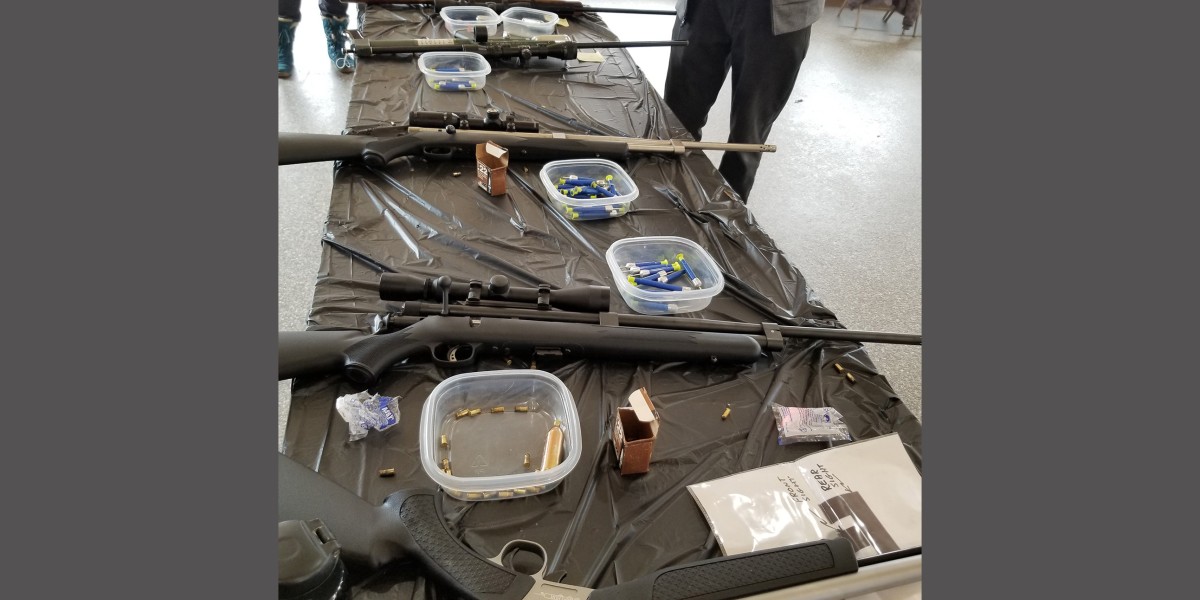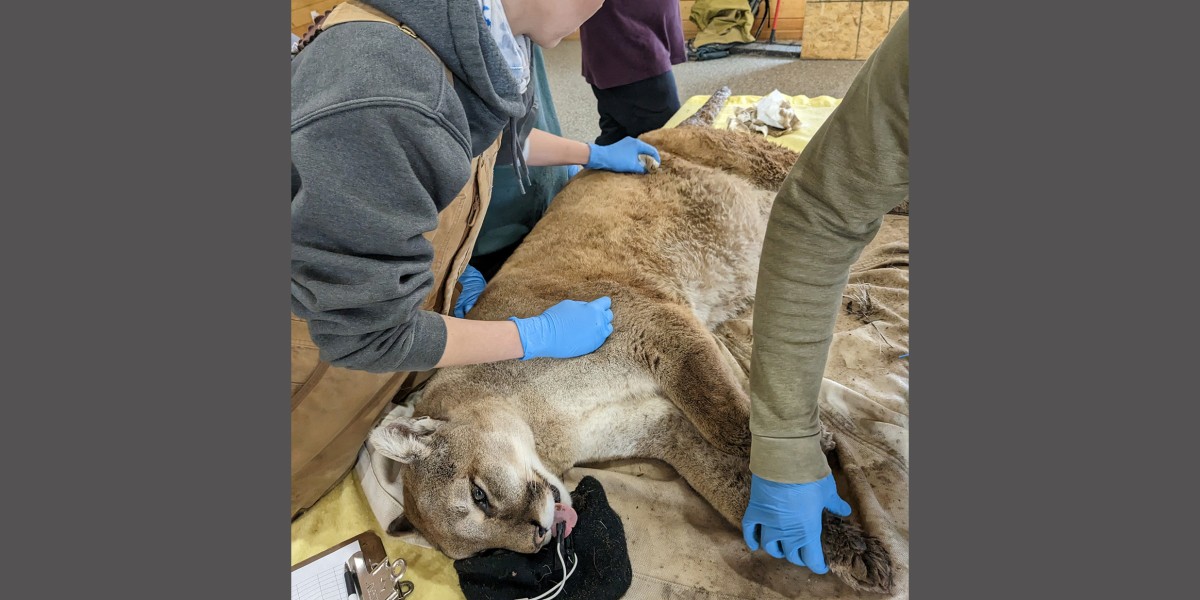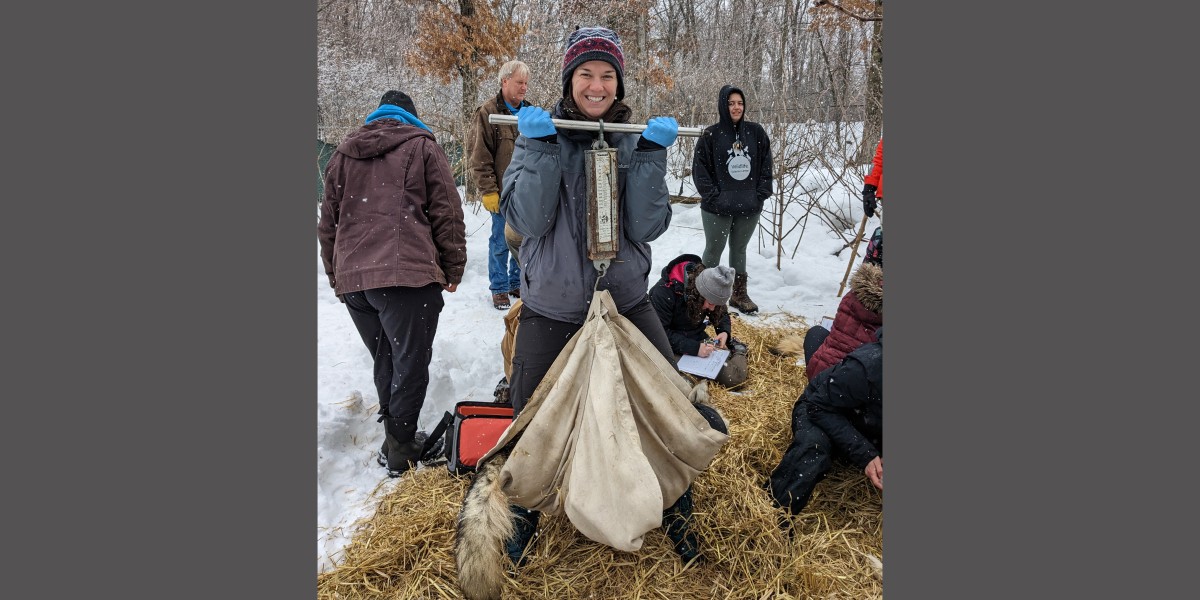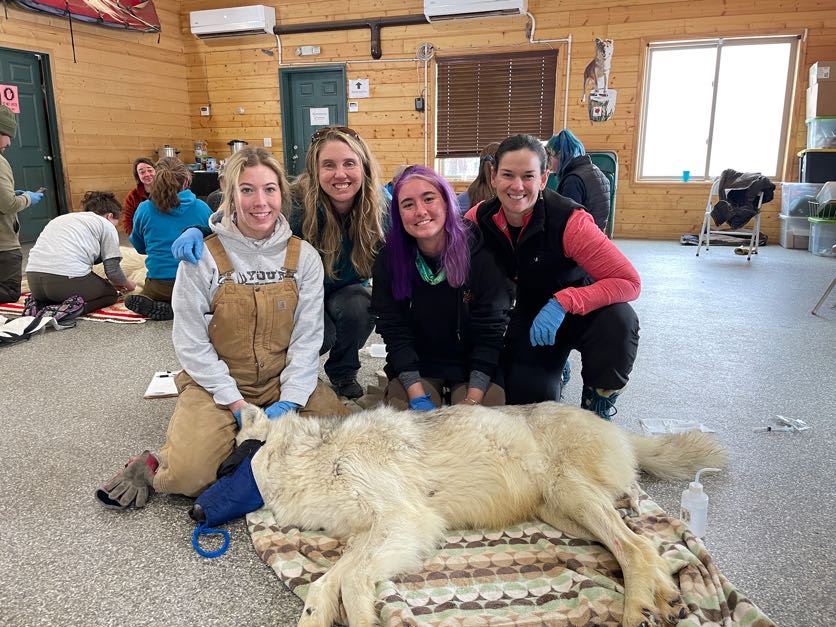The wolves were howling when I arrived at the Wildlife Science Center (WSC) in Stacy, MN for a Wildlife Capture and Chemical Immobilization course put on by the Center for Wildlife Studies. The WSC is a 501(c)(3) nonprofit that is home to nearly 200 animals and provides educational and research opportunities for all ages, including wildlife professionals. The sound of the wolves was both beautiful and eerie and got me really excited to take part in this four-day, hands-on course after spending the last several weeks completing the online preparatory course. Now I was ready to put into practice all the hours of studying capture equipment and drugs, animal monitoring and biological sample collection, legalities, and safety.
For our first lesson, the meeting room was set up as a gun range. We practiced loading and firing multiple types of dart guns, including pistols and rifles powered with either CO2, .22 caliber blanks, or compressed air. After picking our favorite equipment, it was time to work with the animals! Over the next four days, we anesthetized mountain lions, black bears, gray wolves, and bobcats. During anesthesia, all animals received a thorough physical examination, including weights and blood collection for health monitoring, and preventative medications (such as heartworm meds for the wolves). Day one focused on mountain lions. We anesthetized two individuals using drugs loaded into a syringe in a DAN-INJECT CO2 pistol. Once the animals were safe to handle, we carried them to a workstation and began monitoring temperature, pulse, and respiration (TPR). We also practiced collecting blood from common collection sites (saphenous and cephalic veins for mountain lions). When we finished, we reversed the effects of the anesthetic and carried the animals to their enclosure to wake up. Day one was a success!
The next day, we worked with two black bears. The bears were hibernating in dens in their enclosures. Again, we used the DAN-INJECT CO2 pistol to inject anesthetics into each bear and worked with them right next to their dens. It was snowy and cold, but that’s how field research is in reality! Monitoring the bears’ TPR was very similar to the mountain lions, but our expectations for normal were adjusted because of hibernation. When animals hibernate, their body temperatures and heart rates decrease naturally. It is normal for hibernating bears to have temperatures in the low 90s Fahrenheit during anesthesia (in summer they would be closer to 99°F). We practiced collecting blood from the femoral and cephalic veins as well as the tongue veins which may be needed in emergencies. Then the anesthetics were reversed, and the bears were returned to their dens to finish hibernating.
Day three was all about wolves. The WSC was originally founded as a wolf research center after a federally funded gray wolf research lab ended. The majority of the animals on the property are gray wolves, and the WSC participates in the Species Survival Plan for both Mexican gray wolves and red wolves. In the morning, we captured three gray wolves with nets and Y-poles and hand-injected them with anesthetics. We carried them inside and monitored their TPR while practicing drawing blood. Like in domestic dogs, the preferred site for blood collection in a wolf is the cephalic or saphenous vein. After we finished, we reversed the anesthetics and kept the wolves in crates filled with hay for warmth until they were awake enough to regulate their own body temperatures outside in their enclosure. In the afternoon, we were back outdoors and worked with a pack of five Mexican gray wolves. We corralled them into a den in the center of their enclosure and used pole syringes to inject them with anesthetics. Then we carried them to an area set up with tarps and straw to keep them warm outdoors while they were anesthetized. We followed a similar process to the gray wolf work earlier in the day, just outside under field conditions. After examining, weighing, and drawing blood from each animal, we placed them back in their warm den to wake up.
On the last day, we worked with two bobcats. Our teams worked quickly and efficiently now that we had so much practice under our belts! As with the wolf captures, the bobcats were captured with nets and Y-poles and anesthetized with drugs delivered via pole syringes. We carried them inside to monitor TPR and collect blood. Like in the larger cat species, the saphenous and cephalic veins are the preferred sites for blood collection in bobcats. We reversed the anesthetics, and similar to the gray wolves, the bobcats were kept in a crate filled with hay until they were awake enough to regulate their own body temperatures outside in their enclosure.
My experience in the four-day capture course at the WSC was incredible. The hands-on opportunities to apply classroom learning and work with native North American species were invaluable. I look forward to applying this experience out in the field in future collaborations with wildlife biologists and researchers in New York!









